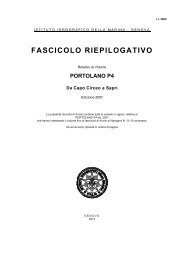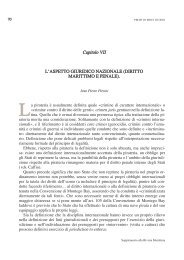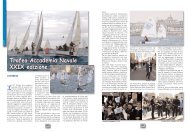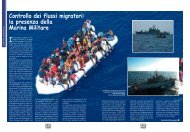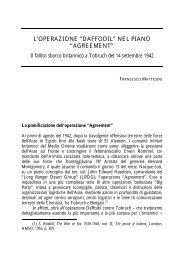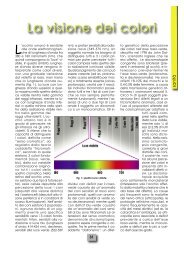143 Anno XVIII - 2008 - Marina Militare
143 Anno XVIII - 2008 - Marina Militare
143 Anno XVIII - 2008 - Marina Militare
Create successful ePaper yourself
Turn your PDF publications into a flip-book with our unique Google optimized e-Paper software.
system, the JMSDF has effectively moved<br />
towards a more flexible force with an improved<br />
ability to perform both ASW and expeditionary<br />
operations (to defend off-shore islands as well<br />
as provide humanitarian assistance). Yet, taken<br />
altogether, these platforms are unlikely to<br />
empower the country with sustainable offensive<br />
capabilities, as it is implicit in maritime power<br />
projection.<br />
From a political point of view, over the past<br />
few years the boundaries of Japan’s defence<br />
have been stretched and widened to the point<br />
that in 2006, former Prime Minister Abe argued<br />
that in the case of imminent missile threats to<br />
the archipelago, it was admissible the use of<br />
pre-emptive strikes on foreign hostile missile<br />
bases. 63 These considerations notwithstanding,<br />
the archipelago’s constitutional law has not<br />
changed and still it ‘does not permit armed<br />
troops to be dispatched to the land, sea, or<br />
airspace of other countries with the aim of<br />
using force’. The normative status quo, whilst<br />
in evolution, is representative of a constraint in<br />
the use of military power which is not merely<br />
political, but also social and psychological on a<br />
wider national level. Similarly, the pursuit of an<br />
‘exclusively defence-oriented’ military posture<br />
continues to represent one of the bedrocks of<br />
the country’s defence policy-making process. 64<br />
These fundamental facets of Japan’s defence<br />
posture are unlikely to undergo radical changes<br />
in the future and it is far from automatic to<br />
assume that partial revisions (most notably, the<br />
inclusion of the right to participate to forms<br />
of collective self-defence) will automatically<br />
translate into more offensive military strategies.<br />
The pathway of Japan’s post-war naval strategy<br />
and policies lead to the conclusion that what<br />
Japan is maturing is an amphibious capability<br />
to match the responsibilities as one of the<br />
largest world economies. The awakening to the<br />
problems of world’s stability played a significant<br />
role in the navy’s decision to procure platforms<br />
to operate at greater distances and to maintain<br />
the command of the sea in the areas like the Sea<br />
of Japan and the East China Sea. The Osumi and<br />
Hyuga class of ships are the iconic symbols of<br />
the JMSDF’s capacity to procure assets capable<br />
of empowering Tokyo’s policy-planners with the<br />
strategic flexibility to commit to expeditionary<br />
missions. Whether and to what extent Japan’s<br />
governments will decide to engage in this sort of<br />
mission is a different story, one that will require<br />
more time to write.<br />
KunisAKi e CLAsse Musyu in nAvigAzione<br />
Missione indonesiA<br />
<br />
3



